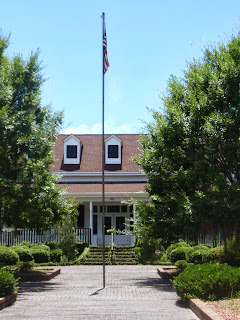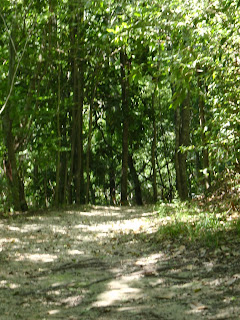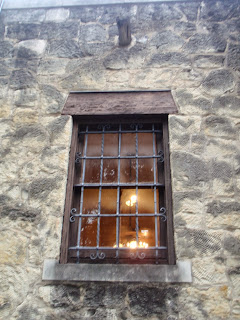SANTEE CANAL
Ten years after Americans declared their independence from the British Empire, a charter was granted for the construction of the Santee Canal, the nation's first. Construction began in 1793 and was completed in 1800. The Santee Canal was 22 miles long with three locks to lift boats from the Santee River to the summit level and seven locks for the descent of the boats to the Cooper River. Droughts and increased competition from railroads prompted shareholders to revoke its charter in 1850
In 1934, the Santee Canal was the inspiration behind the creation of the South Carolina Public Service Authority, more commonly known as Santee Cooper. Building upon the canal's initial purpose of improving inland navigation, the Santee Cooper project electrified rural South Carolina and created lakes Marion and Moultrie.
Today, most of the Santee Canal lies beneath Lake Moultrie, but visible portions remain where boats entered from the Santee River and at Biggin Creek, where it joined the headwaters of the Cooper River. It's also here, in Moncks Corner, where you will find the Old Santee Canal Park
Opened in 1989, the 195-acre park commemorates the area's rich history and habitat. Among its attractions are the Stony Landing House, built in 1843, and four miles of boardwalks that meander through the quiet backwaters of Biggin Creek and its surrounding swamp. The park's centerpiece is its Interpretive Center that chronicles the area's history as far back as 4000 B.C., including the 1863 construction of the Little David, a semisubmersible Confederate torpedo boat used in the Civil War. The Berkeley County Museum and Heritage Center is also located within the park's gates.
Beyond its historical offerings, the park has become a popular
destination for bird watchers, hikers, paddlers and other outdoor enthusiasts.
(Just like me.)
HISTORY OF THE CANAL
"In the early days of this nation, as settlers from South Carolina moved inland from the coast, it was essential that they get their agricultural products, principally cotton and indigo, to Charleston, S.C., for export, since there were no manufacturing plants in the young country. Roads were practically nonexistent, and the best method of transportation was by rivers in the Santee River system. However, boats small enough to navigate the tributaries and on the Santee River were often lost on the open sea voyage from the mouth of the Santee to Charleston. Of necessity, our forefathers determined that something had to be done to prevent the loss of cargoes and often the lives of those transporting the fruit of a year's hard earned labor via the Santee River to Charleston." -- Excerpt from "Professor F.A. Porcher's History of the Santee Canal"
America's first summit canal, the Santee Canal, began operating in 1800 and was considered one of the crowning engineering achievements and economic-development projects of its day.
In 1770, the Commons House of Assembly proposed a survey to determine the most favorable routes for a canal to connect the Santee River with the Cooper River, which would provide a direct outlet to Charleston Harbor. Henry Mouzon Jr. was commissioned in 1773 to survey routes for such an inland waterway. The Revolutionary War silenced talk of the canal until 1785 when the newly formed General Assembly granted a charter to the Santee Canal Company.
Dragon fly which stood still just long enough.
Construction began in 1793 under the supervision of Col. Christian Senf. Over 700 laborers worked for seven years with picks and shovels to complete the project. The completed canal was 22 miles long, 35 ft. wide, and 5 ½ ft. deep. It was designed to handle a 34-ft. rise through three locks and a 69 ft. fall through seven more for a net difference of 35 ft. between the Santee and Cooper rivers.
Operation of the canal went smoothly for the first 16 years, but severe droughts dried up the canal and halted all traffic. Corn was planted in the canal bed to take advantage of the fertile soil. The busiest year for the canal was 1830, when a total of 700 barges and boats, laden primarily with cotton, traveled through the waterway.
While traveling tripadvisor has become my friend/tool. It's how I discovered
this wonderful canal/park. I loved these staircases to my wonderful adventure/hike.
I was blown away by what I discovered. This little adventure reminded me of when
I was younger and read those story books at the end that stated if you want this adventure
turn to this page. This park gave me so many beautiful walking trail options with beautiful
sights. After I was done I thought did I see it all, did I miss something? So I would
turn back. I didn't come prepared and forgot my bug spray. Keep reading for my adventure
where I took a trail that deepened my faith!
The completion of a railway between Columbia and Charleston in 1840 left the canal dependent on what little traffic trickled down the Wateree River. In 1846, the railroad was extended to Camden, thus hastening the eventual demise of the canal. In 1850, the General Assembly revoked its charter at the request of the shareholders.
Most of the canal now lies beneath Lake Moultrie. Some of the upper portions of the waterway are still visible, where boats entered from the Santee River, and the southernmost sections, which joined the headway of the Cooper River at Biggin Creek.

Old Santee Canal Park is centered where the southernmost section of the canal enters the quiet waters of Biggin Creek and the surrounding swamps.
The high bluff at the headwaters of the Cooper River has, for generations, been known as Stony Landing. Because of the natural advantages of its setting, it became a crossroads of early commerce. Boat traffic from the port of Charleston took on the goods of the upcountry and unloaded finished products for overland transportation to the growing frontier and the Indian nations. The construction of the canal further solidified the importance of this area.
While earlier buildings had certainly occupied this site, the plantation house presently at Stony Landing bluff was built circa 1843 by Charleston merchant John Dawson. It faced the road to the Congaree, but visitors now have sweeping views of the Tailrace Canal, which flows from the Lake Moultrie. The house has been restored and is open to the public for tours.

So little by little I was getting eaten by bugs but I was having such a nice
beautiful day exploring I couldn't resist this trail. Once again I never
want to miss anything. Well female mosquitos love the water and me.
I've never seen mosquitos so hungry for me. My legs/arms/face. Some how
they found a way to eat me through my clothes. I saw a sign that was suppose
to turn me back to where I came from. It was a dead end but a beautiful
dead end with a bridge with a view of the swamp. I couldn't enjoy it
because I was being swarmed with lethal bugs.
I kept slapping them and finding my blood
everywhere. Plus it was HOT and in the south. I was drenched.
I kept walking and realized I was lost. I began to panick a little bit.
What was I thinking?
I kept praying and asking "Can you please make the bugs be less hungry?"
I was all by myself I couldn't even hear one single soul.
I began to jog and saw a sign so I took it.
It had been raining a lot this summer and so when I got to the middle
of my path the road that would take me back was covered in mud and water.
Up to my knees. I felt defeated.
I prayed some more and went back to the beginning of the sign.
Which way and I felt an answer turn right.
I began to tear up because the mosquitos were ruining my day.
It felt as though I had boils on me from head to toe.
Somehow I was lead to the back of the trail.
I was so happy to see this wide bridge.
More happy to see this building because I had remembered
seeing it as I drove into the park.
I had wanted to see the museums but I was a bit wet
from the heat and decided it was time to go.
They would take one look at my bites and send me away:)
So grateful for my faith, beauty of the earth
and a loving God that keeps me safe.
It seems as though a Wal-Mart is never to far away.
I got some weird looks when I walked in and I quickly
got a new shirt. Went into the bathroom to change and went
back in to get some gatorade.
The sweet adventures of life.
These are my favorite memories because it's when I feel the most alive and happy.


































































